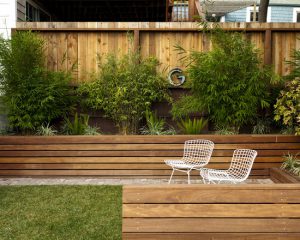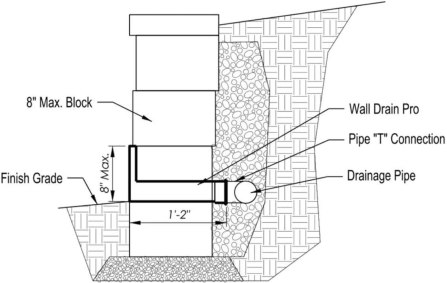Retaining walls are important in landscaping and are also a crucial part of home design. Along with acting as a buffer between a garden and house, the wall can also assist with stormwater runoff control, water flow, and maintain the aesthetic value throughout the lawn. However, many homeowners may not realize the full advantages of retaining walls when developing or planning their own landscaping layout. Retaining walls can perform much more than just keep out weeds. They can literally add thousands of dollars to the value of your home.
Retaining Walls For Gardens
There are lots of types of materials available for use as Retaining Walls Melbourne and there are several distinct advantages associated with each material type. Retaining walls can be created from concrete, stone, vinyl, block, and pavers. Concrete, stone, and vinyl all have their own unique purposes. All substances have their advantages and disadvantages depending on the landscaping layout you are interested in and your budget.
Retaining Walls For Gardens
Concrete is the most common form of retaining walls located in lawns everywhere. The only drawback to concrete is that it may be difficult to work in if you do not have a lot of experience. If you are thinking about building retaining walls but do not want to deal with the challenges connected with concrete, consider investing in another kind of concrete fencing. Stone is another popular option for anyone trying to protect gardens and lawns from damage. Although stone might not be as lasting as some of the other possibilities, they can compensate for this through design and style.
Retaining Walls For Gardens
The substance utilized for rock retaining walls ranges from granite and marble into slate. Each substance comes with its own advantages and pitfalls. If you’ve got a large retaining wall project in mind, consider having it done with stones. The ease in cleaning, durable, and attractive structure make stone’s an ideal selection for keeping walls.
Pavers are a wonderful alternative to stone or concrete retaining walls. They are easy to work with and develop in a wide range of styles and substances. Since they tend to settle, they are inclined to be less subject to settling compared to some of the other substances. This makes pavers a good choice if your keeping walls will be sitting in water and have to stay in the area for a long period of time.
Rubber is another choice to consider for protecting walls. Rubber can be painted to blend in with the rest of your garden, and the material itself does not have to be aesthetically pleasing. Rubber is resistant to many kinds of water, and won’t rust as any other materials may. In addition, it can be very inexpensive and is easy to find in any home improvement store. Due to its low maintenance, it’s an excellent choice for low-maintenance walls.
If you are worried about your retaining walls being in direct contact with water, there is another choice to think about. Some people opt for fiberglass because their wall covering, and it does have its advantages. Fibre glass will not rot, does not stain and isn’t affected by salt. Nevertheless, it can be difficult to discover and is generally more costly than other alternatives.
Whether you choose concrete, clay, or some other stuff, the most important consideration to remember is that your retaining walls must be built to retain the integrity of the underlying ground. If the material does not hold up, the whole construction can become vulnerable and collapse. This can be a very costly issue, and one that you don’t wish to deal with. With appropriate research, a little bit of know-how, and also the proper materials, you might have a retaining wall up in no time!
